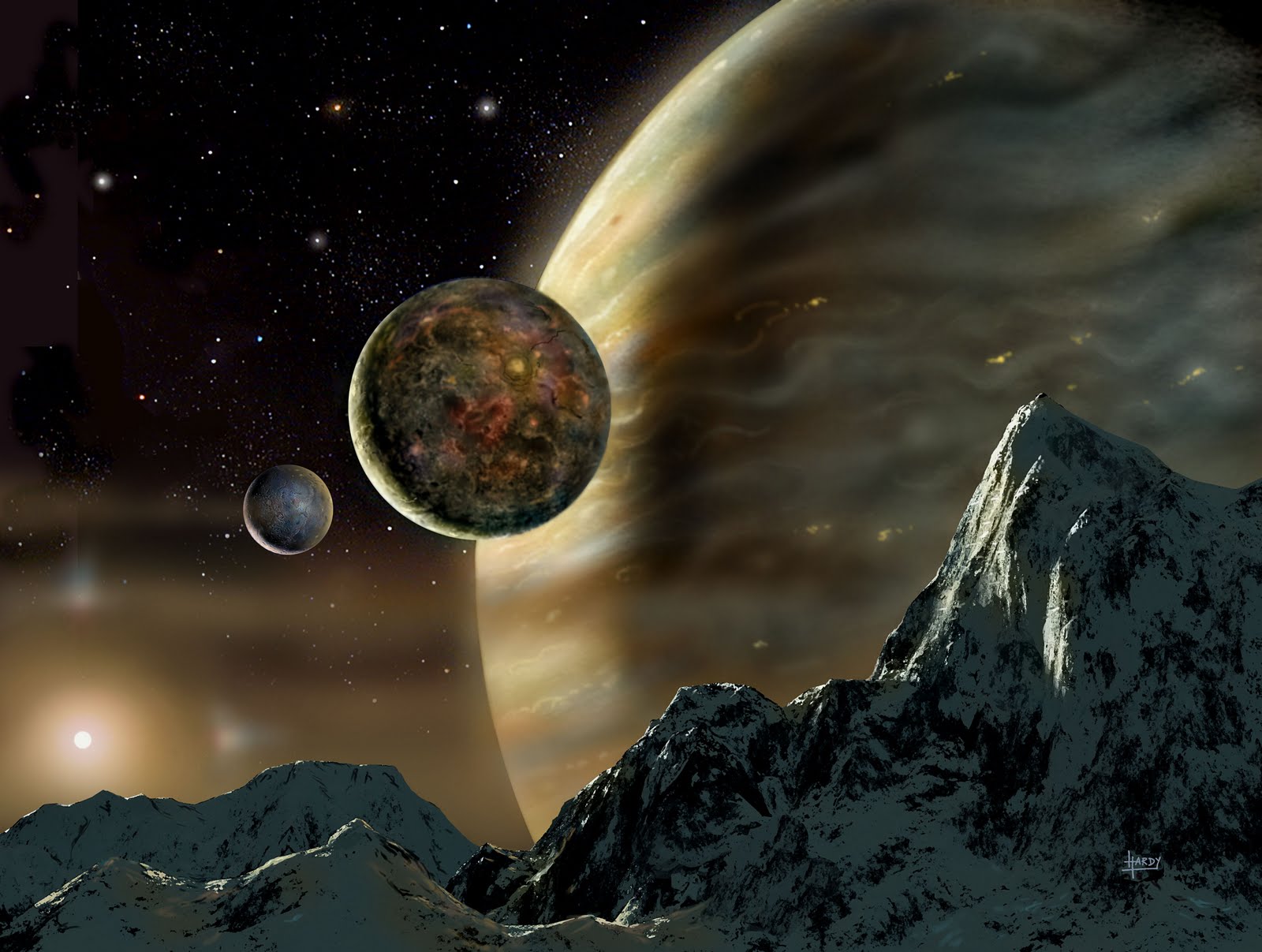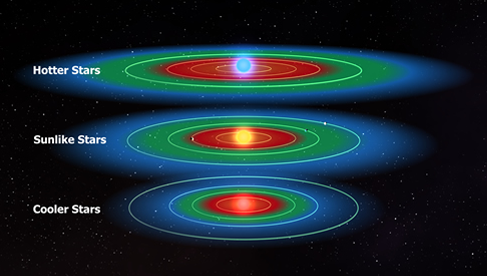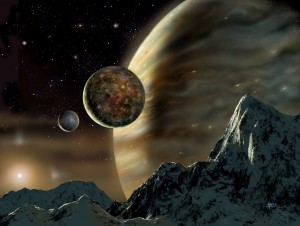April 3, 2014 – The University of Puerto Rico at Arecibo is keeping a catalogue of current habitable exoplanets, planets that sit within the Goldilocks Zone surround a star. The image below illustrates the relative position of Goldilocks Zones around three different star types. Green depicts zones favorable to life.
Of the more than 5,500 discovered to date, here is the top 20 list:
- Gliese 667C c – the Gliese system contains 3 stars and the one called “C” has a planet 4.39 times Earth’s mass orbiting around it at the warm edge of its Goldilocks Zone. Based on current observations it is said to be 85% similar to Earth.
- Kepler 62 e – is between 1.4 and 1.6 times Earth’s mass situated 1,200 light years from Earth. It circles a red dwarf star and is believed to be a water world. It has a sister planet that is also within the Goldilocks Zone. See number sixteen on this list.
- Kepler 283 c – newly discovered this year it is one of two planets orbiting a star 1,743 light years from Earth. Its orbital period is 92 days. It sits about 1/3 the distance from its star than Earth and is about twice the mass of our planet.
- Kepler 296 f – about twice the size of Earth it circles a star half the size of our Sun along with four other inner companion planets. It is the only one lying within the Goldilocks Zone.
- Tau Ceti e – the fourth planet in a star that is 11.9 light years from Earth. It is on the hot inner edge of the Goldilocks Zone and is about 1.8 times the mass of Earth. If life exists on it, it will resemble the thermophiles we find near geysers and deep sea bubblers here on Earth.
- Gliese 180 c – about 38 light years from our Solar System, it orbits a star along with another planetary partner that also sits within the Goldilocks Zone. It is a super Earth about 6.4 times larger than our planet.
- Gliese 667C f – is part of the same triple star system as the number one planet on this list. It may be twice the size of Earth and lies in the middle of the Goldilocks Zone.
- Gliese 581 g – is the sixth planet circling its star, 20.5 light years from Earth. It’s between 3 and 4 Earth’s mass with a surface gravity 1.1 to 1.7 times ours. It likely has a denser atmosphere than Earth but its surface temperatures make it a strong candidate for supporting life.
- Gliese 180 b – one of two planets circling its star within the Goldilocks Zone. Its mass is 8.3 times that of Earth and is rocky in composition just like our planet.
- Gliese 163 c – is 49 light years from Earth orbiting a red dwarf. Its mass is 7.2 times that of Earth and sits on the hot end of the Goldilocks Zone. It may harbor only microscopic life.
- HD 40307 g – is 42 light years from Earth and has been described as either a large Earth or a warm Neptune. It circles its star every 197 days and has a mass 8.19 times that of our planet.
- Kepler 61 b – is about twice the size of Earth and circles its star about every 60 days.
- Gliese 422 b – sits 41 light years from Earth orbiting within the Goldilocks Zone of a red dwarf star.
- Kepler 22 b – is located 600 light years from Earth and was the first known exoplanet to be observed transiting its Sun-like star. It takes 290 days for it to complete one orbit.
- Kepler 298 d – one of three planets circling its star it was discovered in 2014. Its orbit is approximately 1/3 the distance of Earth’s from the Sun and takes the planet 77 days to complete it. It is on the hot edge of the Goldilocks Zone.
- Kepler 62 f – along with Kepler 62 e, this planet has an Earth mass of 1.4 and takes 267 days to complete its orbit. It sits close to the outer edge of the Goldilocks Zone surrounding its red dwarf star.
- Kepler 174 d – sits about 2/3s the distance that Earth sits from the Sun, it is one of 3 planets in the system. It is about twice the size of Earth and takes 247 days to complete one orbit.
- Gliese 667C e – is part of the same triple star system as the number one planet on this list. Based on its position around its star it may have a liquid water surface.
- Gliese 682 b – 17 light years from us, this is a rocky super Earth, 4.4 times the size of our planet. There may be a second super Earth in this system as well circling the edge of the Goldilocks Zone.
- Gliese 581 d – lies 20.2 light years from Earth and is the third planet in its solar system with a mass 6.98 times that of our planet. From where it orbits in the Goldilocks Zone, scientists conjecture that it may have a surface with liquid water.
So those of you contemplating where your descendants may chose to live other than here on Earth, these are your current candidates. Meanwhile this month is a great time to watch Mars as it has its closest approach to Earth, less than 50 million kilometers away. The last two days I have watched it from my bedroom window, a pale orange object in the sky, the one place right now in our Solar System other than Earth where we suspect life may have existed.
To keep on top of newly discovered exoplanets that your descendants may voyage to, you can visit the Open Exoplanet Catalogue compiled under license from the Massachusetts Institute of Technology. It is an informative site.





















